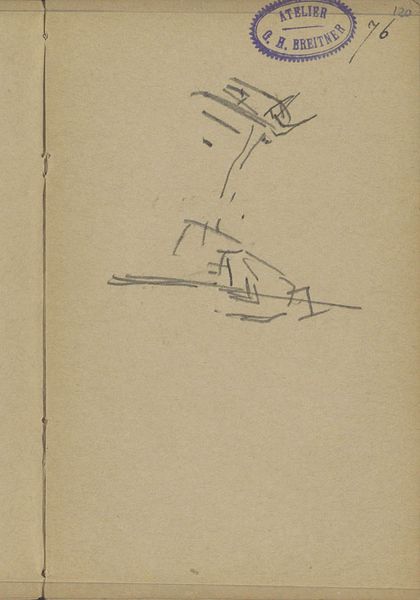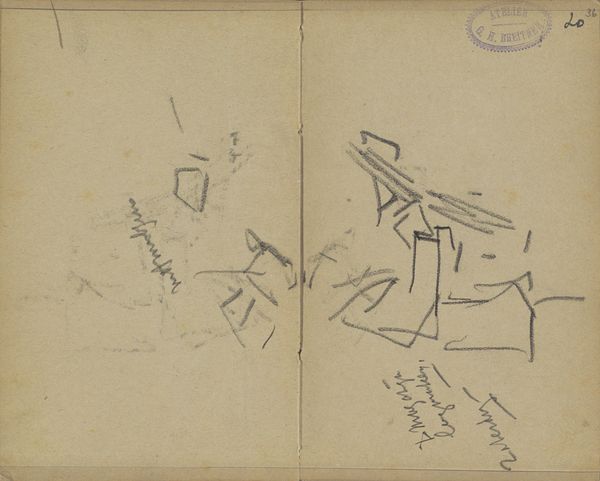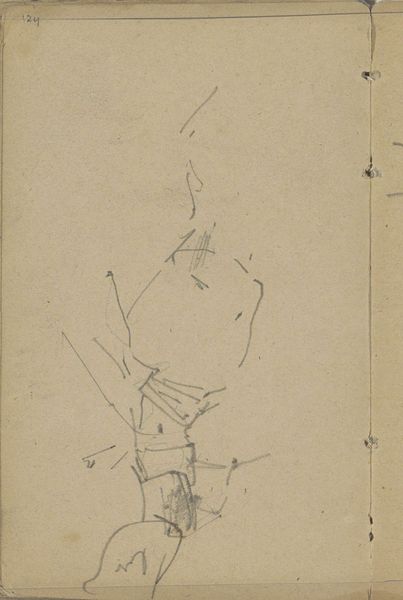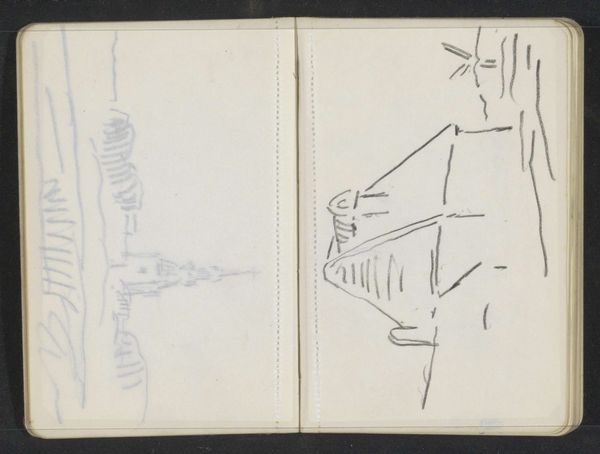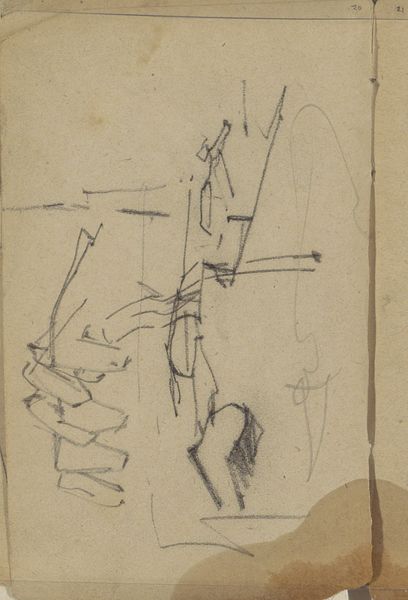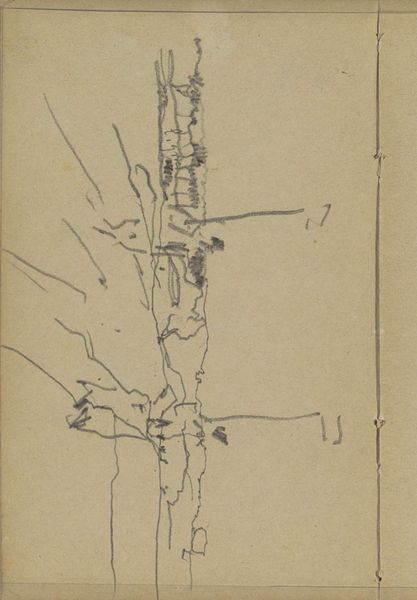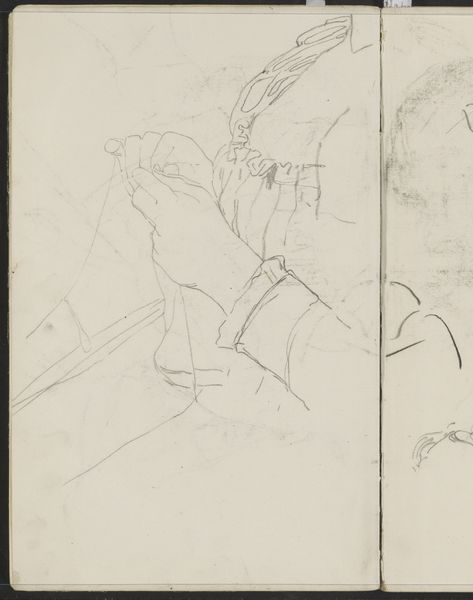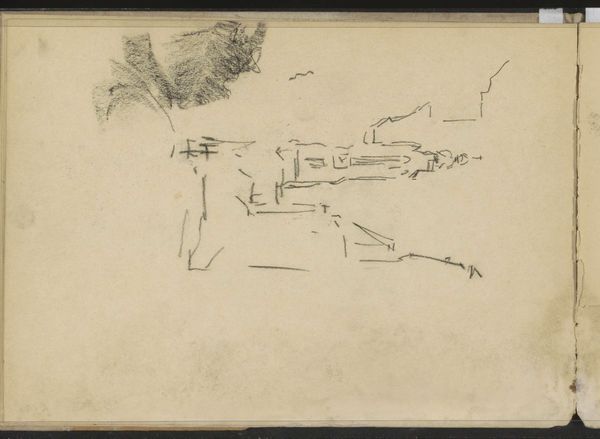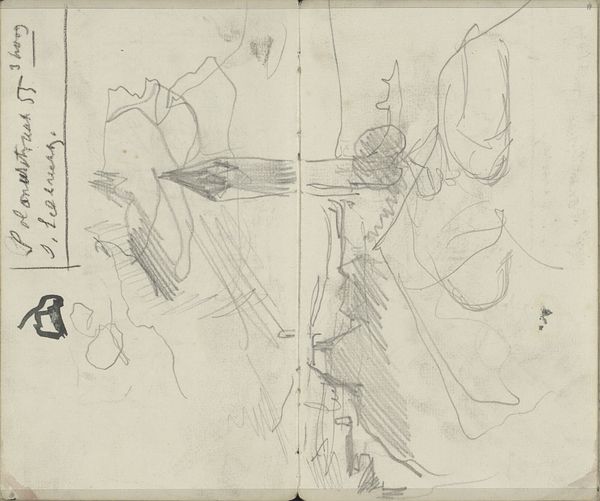
drawing, pencil, graphite
#
drawing
#
impressionism
#
landscape
#
figuration
#
pencil
#
horse
#
pen work
#
graphite
Copyright: Rijks Museum: Open Domain
Curator: This sketch, titled "Soldaat te paard," or "Soldier on Horseback," was created by George Hendrik Breitner between 1887 and 1891. Breitner was a key figure in the Dutch Impressionist movement. You can see it currently at the Rijksmuseum. It's executed in graphite and pencil on paper. Editor: Oh, my first thought? It's like a whisper of a moment. Barely there, but the energy! I feel the horse's restless shift and the soldier's... I don't know, maybe a world-weariness etched into just a few lines. Curator: Yes, exactly! Breitner was known for capturing fleeting moments of urban life, and while this is not strictly urban, you can see that impressionistic desire to grasp the immediate. It's likely from one of his sketchbooks, a quick study rather than a finished work. Editor: Which, to me, makes it even more intimate. You're seeing the artist thinking, feeling, *right* there on the page. Look at the economy of line, how he suggests form with so little. Curator: Precisely. Breitner's style evolved during this period. He moved towards a more raw, immediate representation of reality, influenced by his interest in photography. This sketch demonstrates how he distilled complex scenes to their essence. Consider also, how military themes were circulating at the time, fitting with a resurgent nationalism in Europe, so Breitner is certainly working within that historical framework. Editor: Mmm, and while I see that context, I'm also just struck by the vulnerability of it. Soldiers, horses… they are usually monumentalized in art. But here, there’s nothing grand. It’s a sketch from life, ordinary even in its subject matter. Like catching a glimpse of a private, pensive moment of both man and beast. And maybe, because it's just lines on paper, it reflects also our understanding of their place in history, equally fleeting and undefined. Curator: It is a beautiful paradox: capturing the monumentality and ordinariness, side-by-side. Editor: Exactly! It leaves so much space for our own interpretation, for feeling the moment rather than just knowing the story. Curator: I agree. Studying works like this reveals much about Breitner's process and also how art reflects larger socio-political currents. Editor: It's a tiny little window. Peeking in at a particular soldier, horse, and artist all at once. Beautiful.
Comments
No comments
Be the first to comment and join the conversation on the ultimate creative platform.


